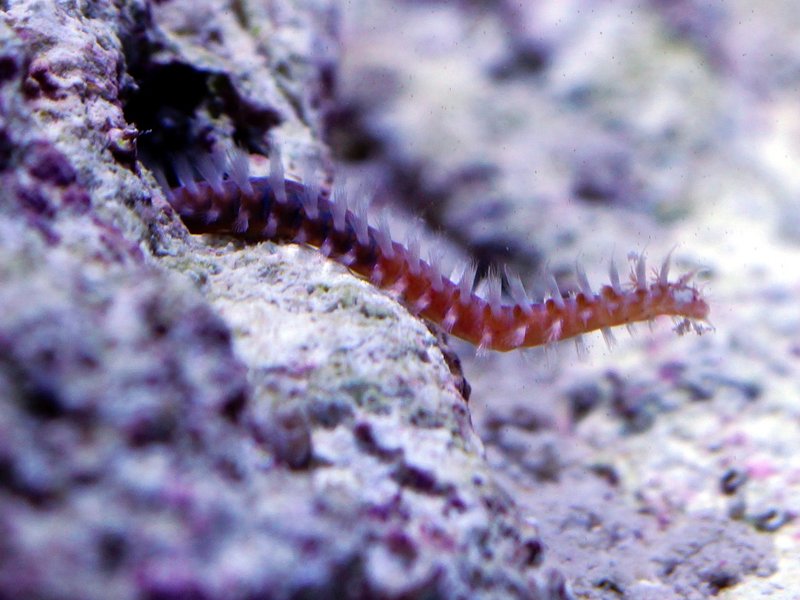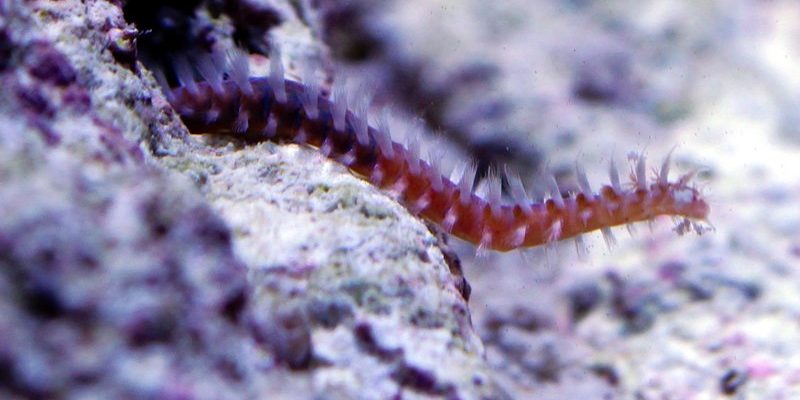
Bristle worms are part of the natural ecosystem in many saltwater environments. They play a crucial role in breaking down organic matter, which sounds great, right? But when these little invaders start multiplying in your aquarium, they can disrupt the delicate balance you’ve worked so hard to maintain. Let’s dive into how they sneak in, what they can mean for your aquarium health, and how you can manage or prevent their unwelcome arrival.
What Are Bristle Worms?
Bristle worms are actually a group of segmented worms belonging to the class Polychaeta. They come in different sizes and colors, typically featuring long, slender bodies covered in bristles. These bristles can deliver a painful sting if touched, making them uninviting roommates in your aquarium.
You might find these worms hiding in the substrate or creeping along the rocks during the night. While they are often considered scavengers, feeding on decaying matter and detritus, too many can lead to issues like overpopulation and harm to your corals. It’s like having a few ants in the kitchen—it’s fine until they multiply and take over the pantry!
How Do Bristle Worms Get into Your Aquarium?
Bristle worms are sneaky little creatures, and they often make their way into saltwater aquariums through various paths:
- Live Rock: This is one of the most common ways. When you add live rock to your aquarium, you’re also bringing in all sorts of hitchhikers, including bristle worms.
- Sand Substrate: If you’re using sand from the ocean or from an untrusted source, it could also be a haven for bristle worms.
- Coral Frags: When purchasing new corals, inspect them closely. Sometimes these worms can sneak in as hidden passengers.
- Water Sources: If you’re using untreated or non-filtered water from an outside source, bristle worm larvae could hitch a ride.
Here’s the thing: while some of these entry points are completely innocuous, they can introduce a problem before you even realize it. Keeping a close eye on any new additions to your tank is crucial.
Signs of Bristle Worm Infestation
If you start seeing what looks like tiny, bristly creatures poking their heads out, you might have an infestation. Here are some signs to watch for:
- Visible Presence: Spotting them during feeding times or at night can indicate they’re thriving.
- Damaged Coral: If your corals start exhibiting signs of stress or damage, bristle worms might be the culprits, particularly if the problem coincides with their sudden appearance.
- Overgrowth of Algae: A spike in algae growth can sometimes be linked to a high population of bristle worms, as they can disrupt the balance of your tank.
If you notice these signs, don’t panic! You aren’t alone, and there are plenty of ways to handle bristle worms before they disrupt your beautiful underwater world.
Are Bristle Worms Bad for Your Aquarium?
Honestly, bristle worms aren’t all bad. They do help break down waste and keep your tank clean. However, problems arise when their populations get out of control. Here’s why an overpopulation might be a concern:
– Competition for Resources: With too many bristle worms, they compete with your fish and corals for food, leading to malnourishment of your tank’s other inhabitants.
– Coral Damage: Some species are known to feed on corals, which can lead to significant deterioration of those beautiful pieces you’ve invested in.
– Water Quality Issues: A large population of bristle worms can negatively impact the water quality as they produce waste, potentially leading to higher levels of ammonia and other harmful substances.
You might be wondering whether you should remove them entirely. In low numbers, they can be beneficial. It’s about finding that sweet spot between too few and too many.
How to Control Bristle Worm Populations
Managing bristle worms is possible with a few strategies:
- Manual Removal: If you see them hanging out in your tank, carefully removing them with tweezers can help keep their numbers down. Just be cautious of those bristles!
- Predatory Fish: Some fish, like wrasses, are known to snack on bristle worms. Adding one of these to your aquarium might help control the population naturally.
- Reduce Feeding: If you’re overfeeding your fish, uneaten food can fuel bristle worm growth. Scale back on feeding and ensure your fish are consuming everything offered.
Remember, consistency is key. Keeping an eye on their numbers and taking action quickly can help prevent a larger infestation from taking hold.
Preventing Bristle Worm Invasion
Prevention is always better than cure! Here are some tips to help keep your aquarium bristle worm-free:
– Inspect New Additions: Take the time to inspect any new live rock, coral, or sand before adding it to your aquarium. A quick wash or dip can help dislodge unwanted guests.
– Use Quality Sources: Always get your supplies from reputable vendors. This reduces the chances of bringing in unwanted organisms.
– Maintain Water Quality: Regular water changes and keeping a stable environment can help reduce stress on tank inhabitants, which may contribute to a bristle worm explosion.
By following these preventive measures, you can maintain a healthier aquarium ecosystem and keep those pesky bristle worms at bay.
Bristle worms might not be the best roommates for your saltwater aquarium, but they don’t have to be a disaster. Understanding how they invade and how to manage and prevent their population can make all the difference. By inspecting new additions, maintaining water quality, and knowing when to intercede, you can create a thriving environment for your fish and corals.
In the end, every aquarium has its challenges, but with the right knowledge and care, you can keep your underwater paradise flourishing. So grab your tweezers, keep your eyes peeled, and enjoy the journey of aquarium keeping!

